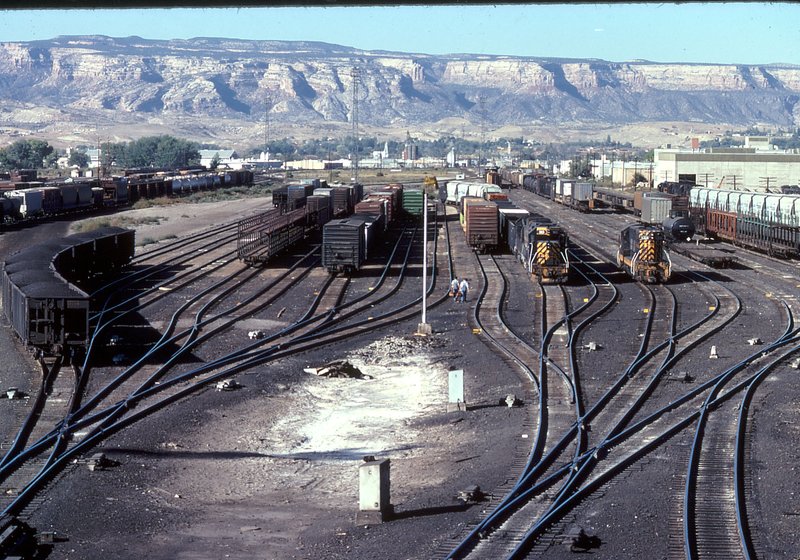I tried asking this question in another forum, but did not get too much in the way of useful information, so I thought I would try in here.
I am working on a contemporary UP yard complex (formerly DRGW) in Grand Junction, CO. It is a fairly sizable complex with a flat classification yard, service facilities, receiving yards and yard leads at the juncture of the Green River Sub, the Glenwood Springs Sub and the North Fork Sub. I have the UP track charts from 2003, and they indicate the signalling on the main line at the control points and at critical points along the yard leads. These would all have point motors at the switches and be controlled I assume from some central dispatching facility in Omaha or somewhere. My question concerns within the yard. There, the charts do not indicate signalling. Would all of these switches have point motors too and be controlled from a central facility? There is a four story control tower looking out over the yard. If they did have point motor control, would they all be signalled with dwarf signals? (I know Trainz the game likes all switches signalled on all three tracks, but real railroads don't necessarily function that way.) Or would the yard switches all, or mostly be manually controlled by brakemen/yard workers using manual switch machines, in which case the flags on the switch machines would act as signals. Does anyone know what "best contemporary practise" would be?
I am working on a contemporary UP yard complex (formerly DRGW) in Grand Junction, CO. It is a fairly sizable complex with a flat classification yard, service facilities, receiving yards and yard leads at the juncture of the Green River Sub, the Glenwood Springs Sub and the North Fork Sub. I have the UP track charts from 2003, and they indicate the signalling on the main line at the control points and at critical points along the yard leads. These would all have point motors at the switches and be controlled I assume from some central dispatching facility in Omaha or somewhere. My question concerns within the yard. There, the charts do not indicate signalling. Would all of these switches have point motors too and be controlled from a central facility? There is a four story control tower looking out over the yard. If they did have point motor control, would they all be signalled with dwarf signals? (I know Trainz the game likes all switches signalled on all three tracks, but real railroads don't necessarily function that way.) Or would the yard switches all, or mostly be manually controlled by brakemen/yard workers using manual switch machines, in which case the flags on the switch machines would act as signals. Does anyone know what "best contemporary practise" would be?




